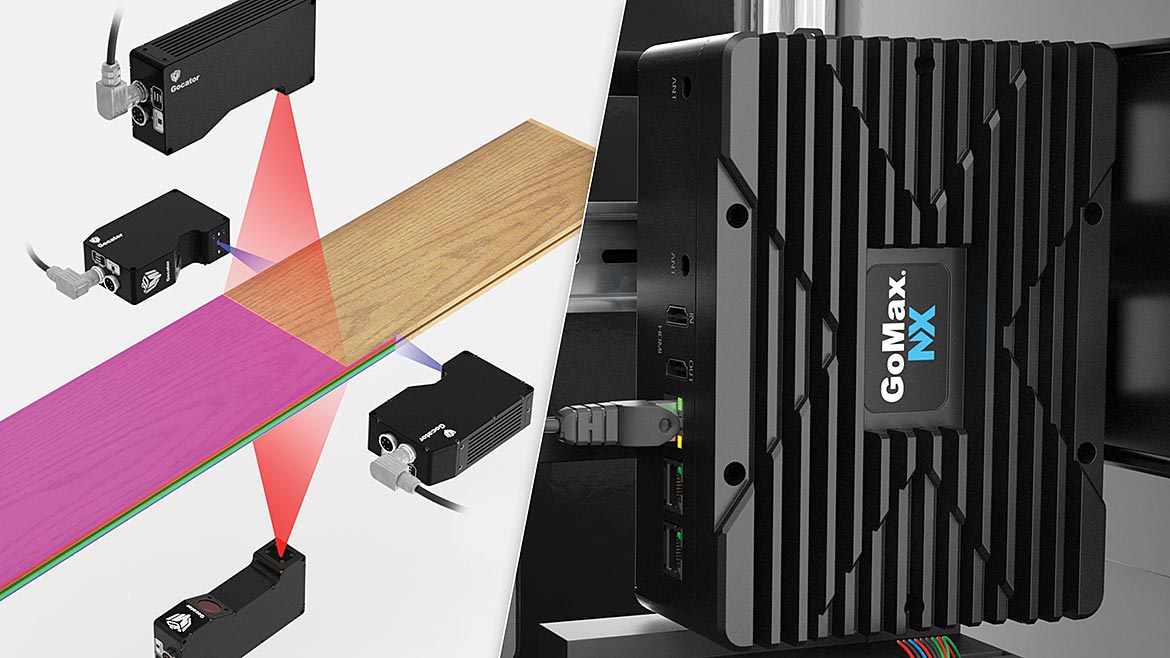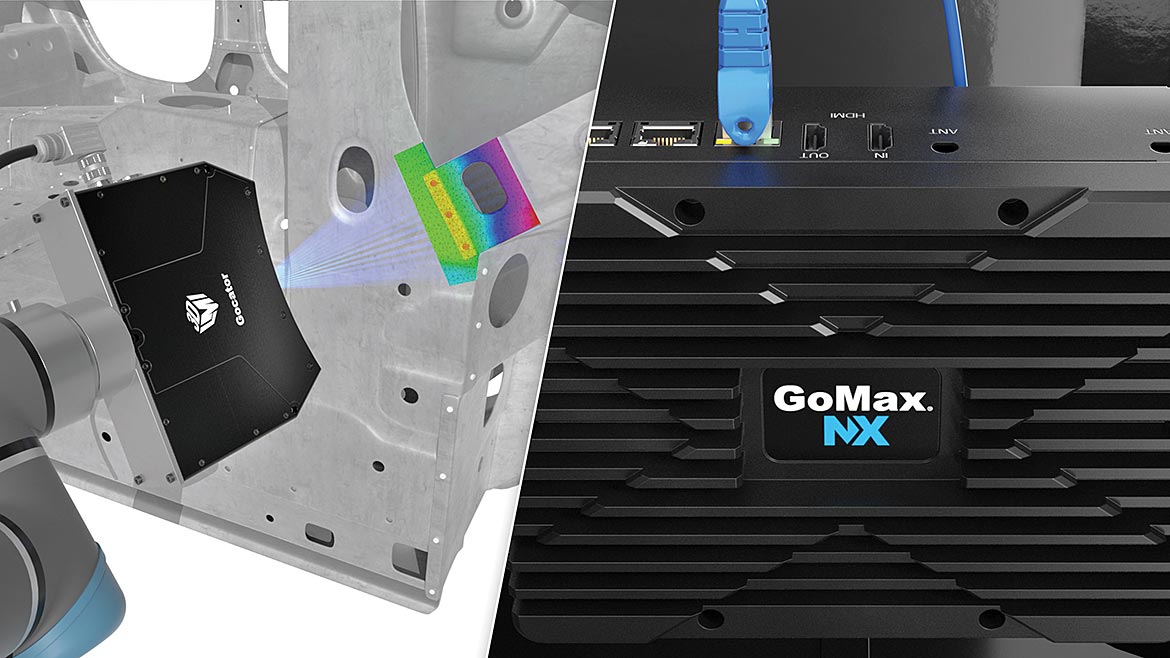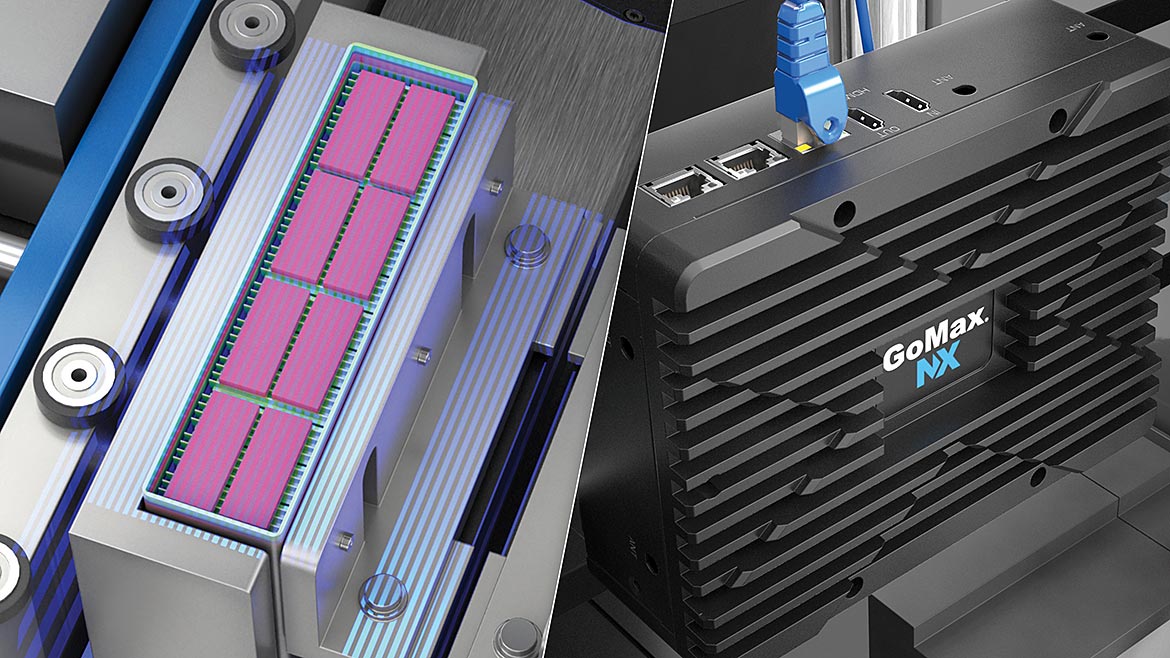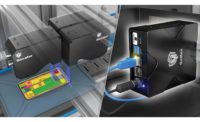Dedicated machine vision acceleration continues to present a significant need in the world of factory automation and quality inspection. These accelerators help manufacturers address the increased data processing demands introduced in complex quality control applications, allowing them to easily augment sensor speed and overall performance when required.
What Is Smart 3D Vision Acceleration?
Today, smart 3D vision acceleration comes in the form of a high-performance embedded device that allows the user to accelerate a 3D smart sensor (laser profiler, structured light) or smart sensor multi-sensor network in heavy-duty inspection applications that require increased data processing power to complete.
These compact, fanless, and easy-to-use vision accelerators complement the smart sensor by taking over a portion of its onboard data processing, which minimizes cycle times and augments overall inspection performance so the manufacturer can achieve optimal inspection results.
Harnessing The Latest GPU-Processing Power
A graphics processing unit (GPU) is a specialized electronic circuit designed to rapidly manipulate and alter memory to accelerate the creation of images in a frame buffer intended for output to a display device. GPUs are used in embedded systems, mobile phones, personal computers, workstations, and game consoles.
Compared to CPUs, GPUs have hundreds of simple cores with thousands of concurrent hardware threads. GPUs process simple instructions in parallel and are highly effective when used for manipulating computer graphics and image processing. In general, GPUs are ideal for processing large sets of image data faster and more efficiently. Their parallel structure is highly efficient for algorithms where the processing of large blocks of data is required, such as in machine vision inspection applications.

Fig.1. Multi-Sensor Ring Scanning - Laser line profilers in ring layout scanning composite flooring Image Source: LMI Technologies
A Dynamic Data Processing Engine
Smart vision accelerator design is based on a distributed, peer-to-peer networking concept where the data processing load is shared between the sensor and a dedicated multi-GPU processor. When the vision accelerator connects with a smart sensor, the sensor is put into accelerated mode wherein pre-processed, semi-compressed 3D scan data is sent over Gigabit Ethernet for final processing. This minimizes network bandwidth and drives faster cycle times by leveraging multi-GPU cores to do the heavy 3D point cloud assembly and measurement.
With dedicated, multi-core GPU data processing, a smart vision accelerator can handle continuous 3D data feeds over Ethernet. In contrast, the demands on managing a continuous Gigabit data stream from a single or multi sensor connection may jeopardize performance of the main inspection application running on an industrial PC by consuming too much CPU or memory resources.
A smart vision accelerator is also able to automatically recover from inspection errors and system failures using a built-in watchdog. IPCs run generic OSes like Microsoft Windows, where there is no watchdog to detect a hung application and subsequently recover.

Fig. 2. Robot-Mounted Weld Inspection - Automotive weld inspection using smart snapshot sensors mounted on a robot, inspecting various points around the frame of the vehicle. Image Source: LMI Technologies
Why Manufacturers Should Use Smart Vision Acceleration
There are four common reasons manufacturers would need to use a smart vision accelerator to enhance the inspection performance of their sensor or multi-sensor system:
1. To achieve faster inspection cycle times using smart 3D snapshot sensors or 3D line profilers in data-heavy applications.
In production lines where large or complex targets are moving on high-speed transport systems, minimizing cycle times (i.e. the time it takes for the sensor to scan the target, apply a measurement, and execute a control decision) is crucial to maintaining consistently accurate product validation and maximum throughput targets.
2. To increase the speed of your measurement tools in complex inspection tasks.
In these cases, smart vision accelerators are able to provide up to 2-3 times increase in output speed of key measurement algorithms applied to large datasets. For example, common machine measurement tasks that have proven to benefit from acceleration include surface hole, surface bounding box, surface plane, profile dimension, profile intersect, and more.
3. To generate a single 3D point cloud from multiple laser line profile sensors when CPU-load is limited.
While multi-sensor networks provide critical synchronized 360º scanning of a target, these networks produce a lot of data because multiple sensors are adding data to the pipeline simultaneously. This is an ideal use case for adding smart vision acceleration to the network to efficiently process these data-heavy 360º scans at production speed.
4. To avoid the hassle of configuring a PC to run your sensor network acceleration.
Bypassing the use of an industrial PC keeps the processing pipeline as streamlined as possible. More specifically, problems often arise when users place the demands of 3D processing on an industrial PC that is running the main inspection application (i.e., user interface, visualization, reporting, and communication to other network devices). In these cases, the performance of the application can be compromised. Trying to accelerate inspection in this way may use up too much of an industrial PC’s resources and can bring the entire system down as a result.
On the other hand, smart vision acceleration eliminates the need for an industrial PC by taking over a portion of the sensor’s onboard data processing (including data generation, 3D measurement, and PLC/robot communication). These smart accelerators can even handle continuous 3D data feeds over Ethernet and automatically recover from data transmission errors.

Fig. 3. EV Battery Foam Inspection - Volumetric measurement and quality inspection of EV battery protective foam with smart snapshot sensors. Image Source: LMI Technologies
Example Applications With Smart Vision Acceleration
GPU-driven smart vision accelerators are of great advantage when large amounts of data must be captured from the target object due to its size or complexity. Examples of such applications include multi-sensor floor panel inspection (Fig. 1), automotive weld inspection (Fig. 2), and EV battery foam inspection (Fig. 3).
Easy To Set Up And Run
Setting up a smart 3D vision accelerator is easy. The user simply connects the device to the smart sensor and uses a web browser-based interface to activate sensor acceleration. The accelerator even leverages a distributed design architecture based on peer-to-peer networking that allows you to easily accelerate entire multi-sensor networks.
Compact For Easy System Integration
A smart vision accelerator comes in a compact industrial package with DIN-rail mounting for simple integration, and consumes just ~10W of power. One or more accelerator units can easily be used to build a solution to demanding inspection applications––without the need for multiple keyboard/monitor hookups, or the complexity of developing an application that works across several industrial PCs.
Easily Upgraded Or Customized
A smart accelerator is designed for easy upgrade or customization through a single firmware download that reflashes both the operating system and the inspection application. IPCs are not designed to upgrade OS or application components with over-the-wire methods like smart vision acceleration.



